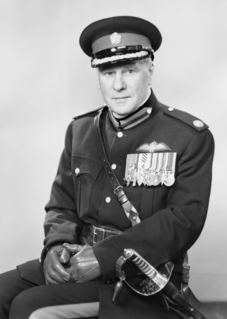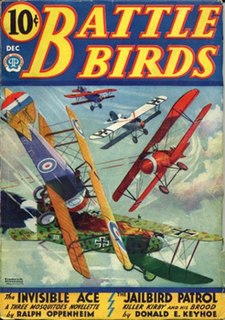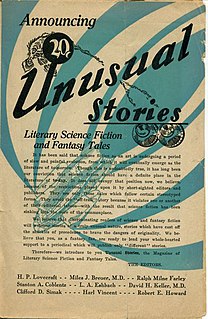Related Research Articles

The Avro Anson is a British twin-engined, multi-role aircraft built by the aircraft manufacturer Avro. Large numbers of the type served in a variety of roles for the Royal Air Force (RAF), Fleet Air Arm (FAA), Royal Canadian Air Force (RCAF) and numerous other air forces before, during, and after the Second World War.

The Supermarine Walrus was a British single-engine amphibious biplane reconnaissance aircraft designed by R. J. Mitchell and manufactured by Supermarine at Woolston, Southampton.

The de Havilland DH.89 Dragon Rapide is a 1930s short-haul biplane airliner developed and produced by British aircraft company de Havilland. Capable of accommodating 6–8 passengers, it proved an economical and durable craft, despite its relatively primitive plywood construction.

The Handley Page H.P.42 and H.P.45 were four-engine biplane airliners designed and manufactured by British aviation company Handley Page, based in Radlett, Hertfordshire. It held the distinction of being the largest airliner in regular use in the world upon the type's introduction in 1931.

Wonder Stories was an early American science fiction magazine which was published under several titles from 1929 to 1955. It was founded by Hugo Gernsback in 1929 after he had lost control of his first science fiction magazine, Amazing Stories, when his media company Experimenter Publishing went bankrupt. Within a few months of the bankruptcy, Gernsback launched three new magazines: Air Wonder Stories, Science Wonder Stories, and Science Wonder Quarterly.

Wing Commander Norman Macmillan was a Scottish officer of the Royal Air Force, a World War I flying ace, test pilot, and author.

Fiction House was an American publisher of pulp magazines and comic books that existed from the 1920s to the 1950s. It was founded by John B. "Jack" Kelly and John W. Glenister. By the late 1930s, the publisher was Thurman T. Scott. Its comics division was best known for its pinup-style good girl art, as epitomized by the company's most popular character, Sheena, Queen of the Jungle.

Tales of Wonder was a British science fiction magazine published from 1937 to 1942, with Walter Gillings as editor. It was published by The World's Work, a subsidiary of William Heinemann, as part of a series of genre titles that included Tales of Mystery and Detection and Tales of the Uncanny. Gillings was able to attract some good material, despite the low payment rates he was able to offer; he also included many reprints from U.S. science fiction magazines. The magazine was apparently more successful than the other genre titles issued by The World's Work, since Tales of Wonder was the only one to publish more than a single issue.
Evelyn Charles Henry Vivian was the pseudonym of Charles Henry Cannell, a British editor and writer of fantasy and supernatural, detective novels and stories.

Scoops was a weekly British science fiction magazine published by Pearson's in tabloid format in 1934, edited by Haydn Dimmock. Scoops was launched as a boy's paper, and it was not until several issues had appeared that Dimmock discovered there was an adult audience for science fiction. Circulation was poor, and Dimmock attempted to change the magazine's focus to more mature material. He reprinted Arthur Conan Doyle's The Poison Belt, improved the cover art, and obtained fiction from British science fiction writers such as John Russell Fearn and Maurice Hugi, but to no avail. Pearson's cancelled the magazine because of poor sales; the twentieth issue, dated 23 June 1934, was the last. The failure of the magazine contributed to the belief that Britain could not support a science fiction magazine, and it was not until 1937, with Tales of Wonder, that another attempt was made.
John Everard Gurdon,, was a British flying ace in the First World War credited with twenty-eight victories.

Flying Aces was a monthly American periodical of short stories about aviation, one of a number of so-called "flying pulp" magazines popular during the 1920s and 1930s. Like other pulp magazines, it was a collection of adventure stories, originally printed on coarse, pulpy paper but later moved to a slick format. The magazine was launched in October 1928 by Periodical House, Inc. It featured stories written and illustrated by known authors of the day, often set against the background of World War I. Later issues added non-fiction aviation articles, as well as articles and plans for model airplanes. The latter became more prominent, and eventually the magazine was renamed Flying Models, and catered exclusively to aeromodeling hobbyists.

The Douglas DC-2 is a 14-passenger, twin-engined airliner that was produced by the American company Douglas Aircraft Company starting in 1934. It competed with the Boeing 247. In 1935, Douglas produced a larger version called the DC-3, which became one of the most successful aircraft in history.

Fantasy was a British pulp science fiction magazine which published three issues in London between 1938 and 1939. The editor was T. Stanhope Sprigg; when the war started, he enlisted in the RAF and the magazine was closed down. The publisher, George Newnes Ltd, paid respectable rates, and as a result Sprigg was able to obtain some good quality material, including stories by John Wyndham, Eric Frank Russell, and John Russell Fearn.

Two Complete Science-Adventure Books was an American pulp science fiction magazine, published by Fiction House, which lasted for eleven issues between 1950 and 1954 as a companion to Planet Stories. Each issue carried two novels or long novellas. It was initially intended to carry only reprints, but soon began to publish original stories. Contributors included Isaac Asimov, Robert A. Heinlein, Arthur C. Clarke, Poul Anderson, John Brunner, and James Blish. The magazine folded in 1954, almost at the end of the pulp era.

Science-fiction and fantasy magazines began to be published in the United States in the 1920s. Stories with science-fiction themes had been appearing for decades in pulp magazines such as Argosy, but there were no magazines that specialized in a single genre until 1915, when Street & Smith, one of the major pulp publishers, brought out Detective Story Magazine. The first magazine to focus solely on fantasy and horror was Weird Tales, which was launched in 1923, and established itself as the leading weird fiction magazine over the next two decades; writers such as H.P. Lovecraft, Clark Ashton Smith and Robert E. Howard became regular contributors. In 1926 Weird Tales was joined by Amazing Stories, published by Hugo Gernsback; Amazing printed only science fiction, and no fantasy. Gernsback included a letter column in Amazing Stories, and this led to the creation of organized science-fiction fandom, as fans contacted each other using the addresses published with the letters. Gernsback wanted the fiction he printed to be scientifically accurate, and educational, as well as entertaining, but found it difficult to obtain stories that met his goals; he printed "The Moon Pool" by Abraham Merritt in 1927, despite it being completely unscientific. Gernsback lost control of Amazing Stories in 1929, but quickly started several new magazines. Wonder Stories, one of Gernsback's titles, was edited by David Lasser, who worked to improve the quality of the fiction he received. Another early competitor was Astounding Stories of Super-Science, which appeared in 1930, edited by Harry Bates, but Bates printed only the most basic adventure stories with minimal scientific content, and little of the material from his era is now remembered.
Fantasy was a British science fiction magazine, edited by Walter Gillings, which published three issues from 1946 to 1947. Gillings began collecting submissions for the magazine in 1943, but the publisher, Temple Bar, delayed launching it until the success of New Worlds, another British science fiction magazine, convinced them there was a viable market. Gillings obtained stories from Eric Frank Russell, John Russell Fearn, and Arthur C. Clarke, whose "Technical Error" was the first story of Clarke's to see print in the UK. Gillings published two more stories by Clarke, both under pseudonyms, but Temple Bar ceased publication of Fantasy after the third issue because of paper shortages caused by World War II. Gillings was able to use some of the stories he had acquired for Fantasy in 1950, when he became editor of Science Fantasy.

War Birds was a pulp magazine published by Dell from 1928 to 1937. It was the first pulp to focus on stories of war in the air, and soon had competitors. A series featuring Irishman Terence X. O'Leary, which had started in other magazines, began to feature in War Birds in 1933, and in 1935 the magazine changed its name to Terence X. O'Leary's War Birds for three issues. In these issues the setting for stories about O'Leary changed from World War I to the near future; when the title changed back to War Birds later that year, the fiction reverted to ordinary aviation war stories for its last nine issues, including one final O'Leary story.

Battle Birds was an American air-war pulp magazine, published by Popular Publications. It was launched at the end of 1932, but did not sell well, and in 1934 the publisher turned it into an air-war hero pulp titled Dusty Ayres and His Battle Birds, with Robert Sidney Bowen, an established pulp writer, providing a lead novel each month, and also writing the short stories that filled out the issue. Bowen's stories were set in the future, with the United States menaced by an Asian empire called the Black Invaders. The change was not a success, and after a year Bowen wrote a novel in which, unusually for pulp fiction, Dusty Ayres finally defeated the invaders, and the magazine ceased publication. It restarted in 1940, again under the original title, Battle Birds, and lasted for another four years.

Marvel Tales and Unusual Stories were two related American semi-professional science fiction magazines published in 1934 and 1935 by William L. Crawford. Crawford was a science fiction fan who believed that the pulp magazines of the time were too limited in what they would publish. In 1933, he distributed a flyer announcing Unusual Stories, and declaring that no taboos would prevent him from publishing worthwhile fiction. The flyer included a page from P. Schuyler Miller's "The Titan", which Miller had been unable to sell to the professional magazines because of its sexual content. A partial issue of Unusual Stories was distributed in early 1934, but Crawford then launched a new title, Marvel Tales, in May 1934. A total of five issues of Marvel Tales and three of Unusual Stories appeared over the next two years.